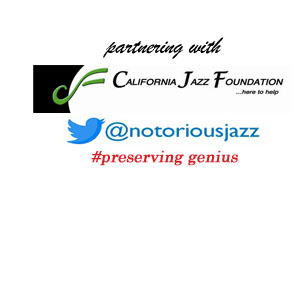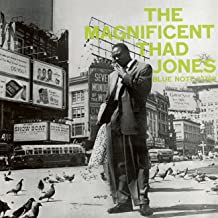
Requisites
The Magnificent Thad Jones | By Eddie CarterMy next entry from the library is the second of three albums released in 1956 by trumpeter, Thad Jones. The Magnificent Thad Jones (Blue Note BLP 1527) finds him in the company of Billy Mitchell on tenor sax, Barry Harris on piano, Percy Heath on bass, and Max Roach on drums. He comes from a musical family, his older brother is pianist Hank Jones and his younger brother, the dynamic drummer, Elvin Jones. Jones also taught himself to play the cornet, and French horn, becoming a professional musician at sixteen. Thad was also a member of some great big bands including Count Basie, Gil Evans, Quincy Jones, and Ernie Wilkins. Jones also led small groups as well and co-led The Jazz Orchestra with drummer Mel Lewis for twelve-years. He led The Danish Radio Big Band and the Count Basie Orchestra for a time after Basie’s death in 1984. His status as an accomplished arranger and composer has given the music world some of the most beautiful compositions ever written including what many consider his masterpiece, A Child Is Born. My copy used in this report is the 2016 Music Matters Jazz Mono audiophile reissue (MMBLP-1527).
April In Paris, written in 1932 by Vernon Duke and E.Y. Harburg begins our five-song journey. It premiered in the Broadway musical Walk a Little Faster that year, later becoming a favorite song among jazz and pop musicians and vocalists. Percy and Max introduce the tune softly, then the front line and piano enter for the melody with Thad dispensing a mellow tone from his horn. Billy makes a brief comment during the opening and ending chorus. Jones opens with a quote from the English nursery rhyme and children’s song, Pop Goes The Weasel. His ensuing verses flow at a relaxing pace into the reprise and fadeout.
Thad’s Billie-Do is a blues characterized by the quintet’s carefree feeling from the brief introduction of the trio into the opening chorus providing a delightful treat of what’s to come. Everyone kicks back individually except Max who provides pleasant brushwork behind each soloist. Jones begins the lead solo with a sweet-toned delivery, then Mitchell conveys a bluesy impression of playful relaxation with a down-home flavor. Harris swings easily on the third reading, then Percy illustrates his rhythmic ingenuity on an abbreviated closer before the quintet takes the song out.
If I Love Again, the 1932 ballad written by Ben Oakland and J.P. Murray ends Side One at an upbeat pace with the quintet delivering high-spirited energy on the melody. Barry opens the soloing with a jubilant performance, then Billy takes over for a vigorously brisk workout. Thad follows with a captivating reading, then Max closes with a clear, crisp attack providing some irresistible musical thrills swinging to the ensemble’s finale.
If Someone Had Told Me is a little-known ballad by Peter DeRose and Charles Tobias that I believe was written in 1952 because the two earliest vocals of the song were released that year. The first was by vocalist Dolores Gray, and the second was done by Sarah Vaughan. The version heard here is a quartet presentation and an attractive feature for Thad who is the only soloist with the trio providing an elegantly lush foundation under him. The trumpeter delivers a performance of beguiling warmth reflecting a bittersweet, poignant moment into a delicately tender finale as good as any you’ve ever heard or will hear.
Side Two closes with Thedia, a cheerfully joyful tune written for and named after Thad’s young daughter. The rhythm section makes a brief introduction for both horns to walk comfortably at an easy beat during the main theme. Billy takes the first solo, establishing a nice momentum in a meticulously conceived and well-executed performance. Barry is next in the spotlight, strolling and swinging to an intriguing beat. Perry grabs and holds the listener’s attention on the third interpretation with two brief choruses that’ll make him or her feel right at home. Thad takes a long, lengthy ride, soaring to the heights on the next statement seamlessly. Max shares the final spot with the leader in several exceptional exchanges ahead of the ensemble’s closing chorus and exit. The sound quality on The Magnificent Thad Jones is positively stunning with an excellent soundstage and tonal balance between the highs, midrange, and bass that transports your sweet spot to the studio hearing the musicians at their best.
The MMJ reissues also include exceptional front and rear covers, high-definition gatefold photos and the pressings by RTI are on 180-gram Virgin Vinyl. If you’re a fan of Hard-Bop or are just discovering Thad Jones, you’ll be delightfully surprised by The Magnificent Thad Jones. It’s jazz at its best and a title I’m certain you’ll enjoy for a very long time! During the fifties, Blue Note employed a sales strategy of giving distinguishing names to some of the artists on its label to spark the public’s interest in their albums and possibly boost their sales. Other examples of this are The Fabulous Fats Navarro, The Amazing Bud Powell, and The Incredible Jimmy Smith. In the cases of the artists listed above, the strategy succeeded beyond their expectations and the names stuck. Debut Records also used this method for The Fabulous Thad Jones in 1954!
~ April in Paris (Verve Records MG V-8012); The Fabulous Thad Jones (Debut Records DLP-12); If Someone Had Told Me (Decca Records 28051), (Columbia 4-39719, 39719) – Source: Discogs.com
~ April in Paris – Source: JazzStandards.com ~ If I Love Again – Source: MusicNotes.com ~ Thad Jones, Pop Goes The Weasel – Source: Wikipedia.org ©2020 by Edward Thomas Carter
More Posts: choice,classic,collectible,collector,history,instrumental,jazz,music,trumpet
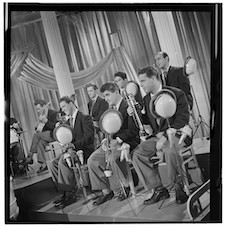
Daily Dose Of Jazz…
Louis Raphael Mucci was born on December 13, 1909 in Syracuse, New York and began as a baritone horn player. By age ten, he was appearing in professional settings. As a teenager, he switched to trumpet and worked in the late 1930s with Mildred Bailey and Red Norvo before joining Glenn Miller’s ensemble in 1938-1939.
During World War II he played in the bands of Bob Chester, Hal McIntyre, Claude Thornhill, and Benny Goodman. In the first half of the 1950s, he worked as a house musician for CBS and also recorded with Buddy DeFranco and Artie Shaw.
The late 1950s saw him working with Miles Davis, Helen Merrill, and John LaPorta. His association with Davis lasted into the early 1960s and he played with Kenny Burrell in 1964. Trumpeter Lou Mucci passed away on January 4, 2000.
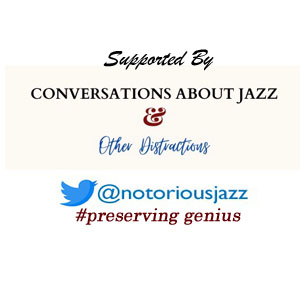
More Posts: history,instrumental,jazz,music,trumpet
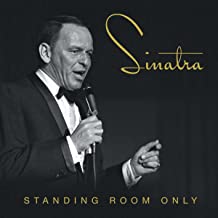
Daily Dose Of Jazz…
Francis Albert Sinatra was born December 12, 1915 in Hoboken, New Jersey and at an early age was greatly influenced by the intimate easy listening vocal style of Bing Crosby. While Sinatra never learned how to read music, he worked very hard from a young age to improve his abilities in all aspects of music. A perfectionist, renowned for his dress sense and performing presence, he always insisted on recording live with his band. He began his musical career in the swing era with bandleaders Harry James and Tommy Dorsey. Finding success as a solo artist after signing with Columbia Records in 1943, he became the bobbysoxers idol.
Releasing his debut album, The Voice of Frank Sinatra, in 1946, by the early 1950s, his professional career had stalled. Turning to Las Vegas, Nevada he became one of its best-known residency performers as part of the Rat Pack. Venturing into Hollywood, his career was reborn in 1953 with the success of From Here to Eternity, and his subsequent wins of an Academy Award and Golden Globe Award for Best Supporting Actor.
Through the Sixties Sinatra released several critically lauded albums, including In the Wee Small Hours, Songs for Swingin’ Lovers!, Come Fly with Me, Only the Lonely, and Nice ‘n’ Easy. Leaving Capitol in 1960 to start his own record label, Reprise Records and released a string of successful albums. In 1965, he recorded the retrospective album, September of My Years and starred in the Emmy-winning television special Frank Sinatra: A Man and His Music.
After releasing Sinatra at the Sands, recorded at the Sands Hotel and Casino in Vegas with frequent collaborator Count Basie in early 1966, the following year he recorded one of his most famous collaborations with Tom Jobim, the album Francis Albert Sinatra & Antonio Carlos Jobim. It was followed by 1968’s Francis A. & Edward K. with Duke Ellington.
Retiring for the first time in 1971 he came out of retirement two years later. He recorded several albums and resumed performing at Caesars Palace, and released New York, New York in 1980. Using his Las Vegas shows as a home base, he toured both within the United States and internationally until shortly before his death in 1998.
Forging a highly successful career as an actor during the Sixties he starred in The Man with the Golden Arm, The Manchurian Candidate, On the Town, Guys and Dolls, High Society, Pal Joey, Ocean’s Eleven, and Tony Rome, as well as television appearances.
He was honored at the Kennedy Center Honors in 1983, was awarded the Presidential Medal of Freedom by Ronald Reagan in 1985, and the Congressional Gold Medal in 1997. Sinatra was also the recipient of eleven Grammy Awards, including the Grammy Trustees Award, Grammy Legend Award, the Grammy Lifetime Achievement Award, and included in Time magazine’s compilation of the 20th century’s 100 most influential people.
Vocalist, actor, and producer Frank Sinatra, who was one of the most popular and influential musical artists of the 20th century and sold more than 150 million records worldwide, passed away on May 14, 1998.
More Posts: bandleader,history,instrumental,jazz,music,vocal

Daily Dose Of Jazz…
Rafael Antonio Cortijo was born on December 11, 1928 in Santurce, Puerto Rico and as a child became interested in Caribbean music and enjoyed the works of some of the era’s most successful Bomba y Plena music musicians. Throughout his life, he had a chance to meet and work with some of them and learned how to make his own congas and pleneras, the handheld drums used in bomba y plena music.
He met salsa composer and singer Ismael Rivera when both were youngsters growing up in the Villa Palmeras neighborhood. They became lifelong friends and Rivera impressed with his friend’s conga-playing skills, asked him to join his orchestra, which played at Fiestas patronales all over Puerto Rico.
Becoming well known across Latin America, Rafael attributed his success to the sound of his percussion, as Afro-Caribbean music was known worldwide. As a member of the Conjunto Monterrey, based in Monterrey, Mexico, he later toured with Daniel Santos’ orchestra and worked on radio.
By 1954, as a member of El Combo, Cortijo’s big break came when El Combo’s leader and pianist Mario Román left the band to him. Ismael Rivera, then the lead singer of Lito Peña’s Orquesta Panamericana, joined Cortijo’s orchestra known as Cortijo y su Combo in 1955. From then until 1960, his orchestra played live on Puerto Rican television shows, and sometime during the 60s, they became the house band at La Taberna India.
The orchestra virtually disbanded in 1962 when Ismael Rivera was arrested for drug possession in Panama. Rafael and the other bandmates went on to found Puerto Rico’s salsa group, El Gran Combo. He went on to create another orchestra, El Bonche, where he was joined by his adopted niece, Fe Cortijo, who would become a well-known singer on her own. He and Rivera went on to live in New York City but he soon returned impoverished to Puerto Rico, where he forged a friendship with composer Tite Curet Alonsothe who helped produce a comeback album. In 1974, Coco Records reunited all the former members of “Cortijo y su Combo” orchestra for a one-time-only concert and a subsequent studio recording issued a few months afterward.
Their friendship was so important to Rivera, that when orchestra leader, musician, and composer Rafael Cortijo passed away of pancreatic cancer on October 3, 1982 at his sister Rosa Cortijo’s apartment in the Luis Llorens Torres public housing project in Santurce, Rivera said he would no longer sing.

More Posts: bandleader,conga,history,instrumental,jazz,music
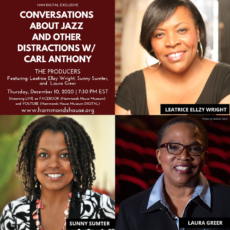
Conversations About Jazz & Other Distractions
Conversations About Jazz
Spotlights The Producers on December 10
Hammonds House Digital invites you to join us for Conversations about Jazz & Other Distractions hosted by former jazz radio host and founder of Notorious Jazz, Carl Anthony. On Thursday, December 10 at 7:30 pm (EST), Carl’s special guests will be some of the industry’s top Producers: Leatrice Ellzy Wright, Executive Director of Hammonds House Museum; Sunny Sumter, Executive Producer of the DC Jazz Festival; and Laura Greer, Senior Producer for The Apollo Theater. This is the last Conversations About Jazz for the year. The program is free and will stream live on Hammonds House Museum’s Facebook and YouTube.
Leatrice Ellzy Wright is a curator, producer, thinker, and fan of disruption. She is the Executive Director of Hammonds House Museum where she curates and produces art exhibitions, as well as cultural and music programming. Her unique skill set has been developed over 29 years of migrating through non-profit management and development, broadcast, media relations, arts presenting and technology. Her arts management and administration experience developed through work at Woodruff Arts Center and the National Black Arts Festival (NBAF). She produced for NBAF from 2002-2005. In 2005 she was hired to manage the organization’s artistic programming and later became the organization’s 5th Artistic Director. More info HERE.
Sunny Sumter is the Executive Director of the DC Jazz Festival, a nonprofit service organization established in 2004 to present jazz-related cultural and educational programs in the nation’s capital. Its signature programs are the annual DC JazzFest held each June, the year-round DC Jazz Festival Education Program; and the Charles Fishman Embassy Series. Prior to her tenure at the DC Jazz Festival, Sumter held management/director positions with the Aspen Institute, National Foundation for Teaching Entrepreneurship, the Smithsonian Institution, and the Rhythm and Blues Foundation. Sumter earned her bachelor’s degree in music business from Howard University where she minored in jazz voice. More info HERE.
Laura Greer is the Senior Producer for The Apollo Theater where she has served for more than a decade overseeing the performing arts, education, and community programs of the historic theater. Prior to her current position, Greer was the Associate Producer at the National Black Arts Festival in Atlanta, Georgia (1999-2005) where she was responsible for the artistic and production oversight of the annual festival. She has also served as the Director of Programming at 651 Arts at the Brooklyn Academy of Music Majestic Theater, specializing in works grounded in the African Diaspora and held various leadership positions at Aaron Davis Hall at City College of New York (1985-1998).
Hammonds House Museum is generously supported by the Fulton County Board of Commissioners, Fulton County Arts and Culture, the City of Atlanta Mayor’s Office of Cultural Affairs, The Community Foundation for Greater Atlanta, The National Performance Network, AT&T and WarnerMedia.
Hammonds House Museum’s mission is to celebrate and share the cultural diversity and important legacy of artists of African descent. The museum is the former residence of the late Dr. Otis Thrash Hammonds, a prominent Atlanta physician and a passionate arts patron. A 501(c)3 organization which opened in 1988, Hammonds House Museum boasts a permanent collection of more than 450 works including art by Romare Bearden, Robert S. Duncanson, Benny Andrews, Elizabeth Catlett, Jacob Lawrence, Hale Woodruff, Amalia Amaki, Radcliffe Bailey and Kojo Griffin. In addition to featuring art from their collection, the museum offers new exhibitions, artist talks, workshops, concerts, poetry readings, arts education programs, and other cultural events throughout the year.
Located in a beautiful Victorian home in Atlanta’s historic West End, Hammonds House Museum is a cultural treasure and a unique venue. During the COVID-19 pandemic, they continue to observe CDC guidelines, but look forward to welcoming in-person visitors soon! For more information about upcoming virtual events, and to see how you can support their mission and programming, visit their website: hammondshouse.org.
MEDIA: Contact Karen Hatchett at Hatchett PR, karen@hatchettpr.com
More Posts: conversations,drums,history,instrumental,jazz,producers


